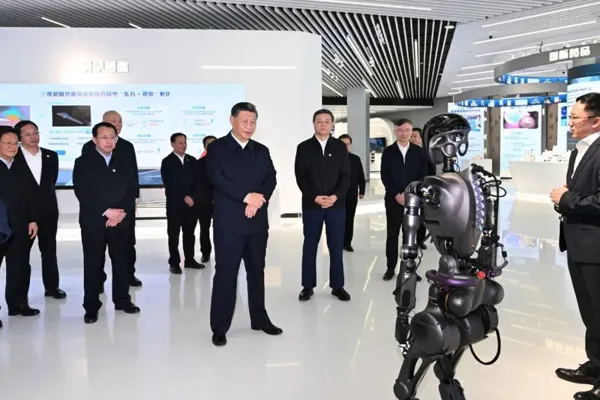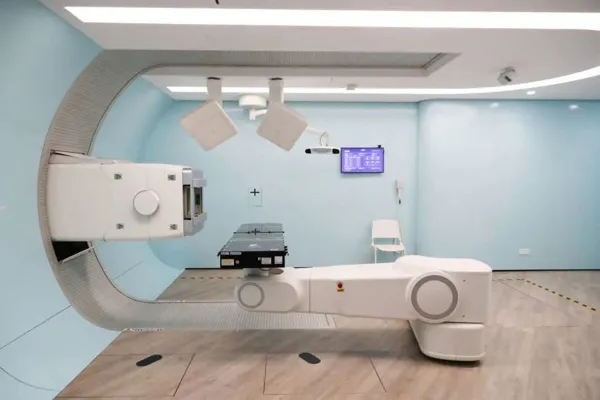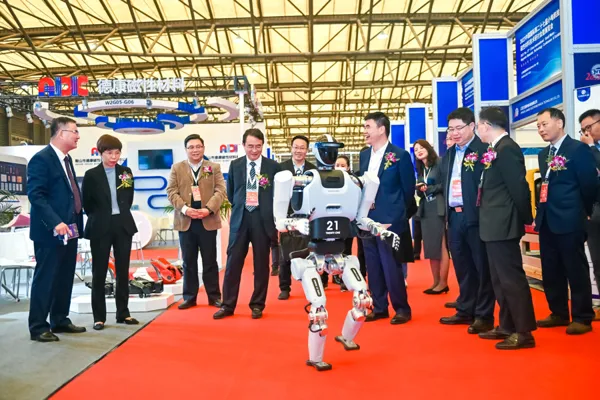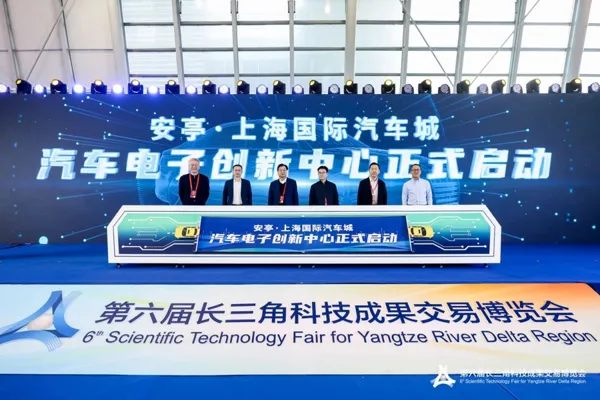What special skills do you have? , the humanoid robot and AI large model that the General Secretary saw in Shanghai
From November 28th to 29th, General Secretary Xi Jinping visited Shanghai for investigation and research, and came to the Shanghai Science and Technology Innovation Achievements Exhibition to learn about Shanghai's progress in building an international science and technology innovation center.
C919 large passenger aircraft, Long March 6A carrier rocket, China Space Station Mengtian experimental cabin, China's first large-scale cruise ship "Aida·Modu", universal humanoid robot GR-1, "Scholar" universal large model system... in Shanghai In the Future Park of Zhangjiang Science City, the Shanghai Science and Technology Innovation Achievements Exhibition displays a large number of high-tech projects. The exhibition consists of seven sections, namely basic research, integrated circuits, artificial intelligence, biomedicine, high-end equipment, open innovation, and better life. The exhibits reflect Shanghai's strengthening of its function as a source of scientific and technological innovation and its promotion of the construction of an international scientific and technological innovation center in the past 10 years. The important results show that Shanghai has the foundation and conditions to become a vanguard of self-reliance and self-reliance in high-level science and technology.
Walking into the exhibition hall, many "national treasures" and their models come into view. They are the independent innovation achievements of scientific research and technical teams for many years.
The C919 large passenger aircraft is a mainline jet airliner developed by my country in accordance with internationally accepted airworthiness standards and with independent intellectual property rights. It made its first flight in 2017 and will complete all airworthiness certification work in September 2022. On May 28 this year, C919 successfully completed its first commercial flight, taking off from Shanghai Hongqiao Airport and landing at Beijing Capital Airport about two hours later. When the plane landed, the passengers in the cabin held the five-star red flag and sang "Ode to the Motherland" emotionally.
C919 large passenger aircraft on the tarmac of Shanghai Hongqiao International Airport.
The Long March 6A launch vehicle was developed by the Eighth Academy of China Aerospace Science and Technology Corporation. It is my country's first solid-strapped medium-sized launch vehicle. It has a total length of about 50 meters, a take-off mass of about 530 tons, and a carrying capacity of not less than 4 tons in a 700-kilometer sun-synchronous orbit. It has laid a solid foundation for the development of my country's new generation launch vehicle.
The Mengtian Experimental Module of the China Space Station was also developed by the Eighth Academy of China Aerospace Science and Technology Corporation. It is divided into four compartments: work cabin, cargo airlock compartment, load compartment, and resource compartment. The cabin structure adopts a unique "matryoshka" design. plan. It has a total length of 17.88 meters, a diameter of 4.2 meters, and a launch mass of about 23 tons. It is my country's largest single spacecraft with the heaviest launch mass so far.
The large-scale cruise ship "Aida·Modu" was built by China State Shipbuilding Waigaoqiao Shipbuilding Co., Ltd. after 8 years of scientific and technological research and 5 years of design and construction. This domestically produced cruise ship is 323.6 meters long, 37.2 meters wide, with a maximum height of 72.2 meters and a total tonnage of 135,500 tons. There are 2,125 guest rooms on the ship, which can accommodate 5,246 passengers. It is equipped with 40,000 square meters of public living and entertainment space up to 16 floors. It can be called a "maritime city". On November 4 this year, the "Aida·Modu" was officially named and delivered, and will launch its maiden commercial voyage in January next year.
The first domestic large-scale cruise ship "Aida·Modu".
Among the photos of General Secretary Xi Jinping’s inspection and investigation, a photo of a humanoid robot attracted a lot of attention. It is all black with a metallic luster and looks very cool standing in the exhibition hall.
It is understood that it is a universal humanoid robot GR-1 developed by Fourier Intelligence Company. It is 1.65 meters tall, weighs 55 kilograms, has 40 degrees of freedom throughout the body, the maximum joint module peak torque can reach 300 N·m, and a walking speed of 5 km/h, can carry 50kg.
It also has the ability to avoid obstacles quickly, can walk on uneven and sloping terrain, and resist external impact and interference. Gu Jie, chairman and CEO of Fourier Intelligence, said that the reason why GR-1 has this ability is because it has a developed "cerebellum" that can complete MPC movements with the support of AI algorithms.
The GR-1 humanoid robot has the ability to walk quickly. Provided by Fourier Intelligence
This humanoid robot uses electric drive technology and has high movement accuracy. Compared with the hydraulic drive technology of Boston Dynamics robots, electric drive has the advantages of large-scale mass production and also has advantages in energy consumption.
In Gu Jie's view, athletic ability is the core competitiveness of future universal humanoid robots. In this regard, Fourier Intelligence has accumulated 8 years of technology. In the process of developing medical exoskeleton robots, the company has mastered underlying technologies such as sensors, modular design, integrated actuators, and bionic mechanical structures, especially in the field of actuator joints, with core advantages. For a robot, the actuator is the key to ensuring its flexible movement and effective task execution. It determines the robot's strength, stability, load adaptability, safety and reliability when completing various actions and tasks. Based on the independently developed high-performance integrated actuator series, GR-1 has quite powerful movement capabilities.
GR-1 humanoid robot is walking quickly. Provided by Fourier Intelligence
"This humanoid robot has strong movement ability and a well-developed cerebellum. With the AI 'brain', it is expected to achieve embodied intelligence." The "brain" of the robot mentioned by Gu Jie is a large model of artificial intelligence. Currently, the company is cooperating with some scientific research teams with large model construction capabilities to develop robot functions based on the needs of special scenarios. What he calls "embodied intelligence" refers to the combination of intelligent algorithms with the robot's perception, action, and environmental interaction capabilities, allowing the robot to interact with the surrounding environment in a more intelligent and natural way and complete various tasks.
According to the plan, humanoid robots will be the first to be used in livelihood scenarios such as rehabilitation and escorting, because Fourier Intelligence has been working in the field of rehabilitation for many years and has accumulated rich experience. In the future, humanoid robots deployed with large artificial intelligence models and strong movement capabilities are expected to engage in various tasks such as housekeeping services, elderly care, education, medical care, facility inspections, and rescue and disaster relief. Due to their developed "brains", they can understand natural language instructions and communicate well with humans; because their body size is close to humans, they have a broad vision and are good at using tools, and will become human substitutes in many scenarios.
Whether the "brain" of a humanoid robot is developed depends on the intelligence level of the large model. At the Shanghai Science and Technology Innovation Achievements Exhibition, the Shanghai Artificial Intelligence Laboratory demonstrated the "Scholar" universal large-scale model system, the large-scale weather forecast model "Fengwu" and the integrated end-to-end autonomous driving model of perception and decision-making. Among them, the "Scholar" general large-scale model system includes the first domestic multi-language large-scale model with 100 billion parameters that supports long context "Scholar·Puyu", the first multi-modal large-scale model that supports the understanding of millions of semantic tags in the open world, the first A city-level three-dimensional space model "Skyrim".
"Scholar·Puyu" has a parameter volume of up to 123 billion, and is trained from high-quality corpus containing 2.3 trillion tokens. It masters multiple languages and has the ability to understand long input text, carry out complex reasoning, and conduct long and multi-round conversations; it can summarize and present complex information through tables and charts; it has demonstrated superior performance in multiple mainstream evaluation sets. Comprehensive performance; possess strong mathematical abilities such as numerical calculations, function operations, and equation solving. It also has strong safety and alignment capabilities, can reliably follow human instructions, and can accurately point out and correct instructions containing incorrect values after receiving them.
"As a new R&D institution, we provide a foundation and support for the industrial ecology and promote original open source construction and key field applications in the field of artificial intelligence in my country." Professor Lin Dahua, a leading scientist at the Shanghai Artificial Intelligence Laboratory, said that the Shanghai Artificial Intelligence Laboratory has released The world's first full-chain large model open source tool system that runs through data, training, evaluation and other links. It not only open sourced the large model base, but also open sourced the entire tool chain for large model development. On the basis of "teaching a man to fish" “Teach a man to fish” brings into full play the value of new R&D institutions in serving industrial ecological innovation.
This new R&D institution also launched the establishment of the China Large Model Corpus Data Alliance in conjunction with 10 units including the China Central Radio and Television Station, the National Meteorological Center, and the China Institute of Scientific and Technological Information to collect multi-knowledge, multi-modal, and standardized high-quality corpora. data. At present, the multi-modal pre-training corpus "Scholar·Wanjuan", which contains three types of data sets: text, graphics and video, has been open sourced. The total data volume exceeds 2TB, aiming to provide academia and industry with Chinese language that is in line with my country's mainstream values. Corpus, giving birth to more powerful, safe and reliable large model applications.





